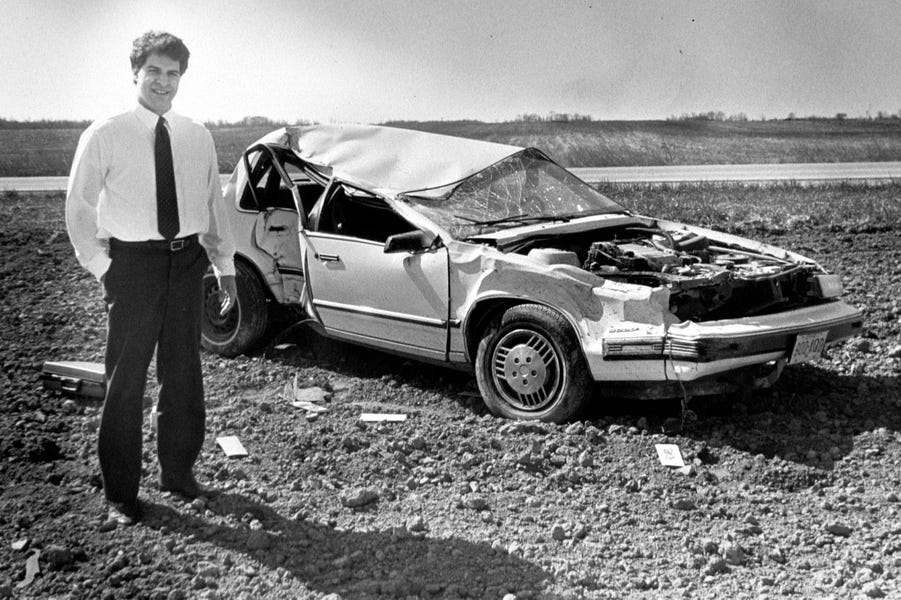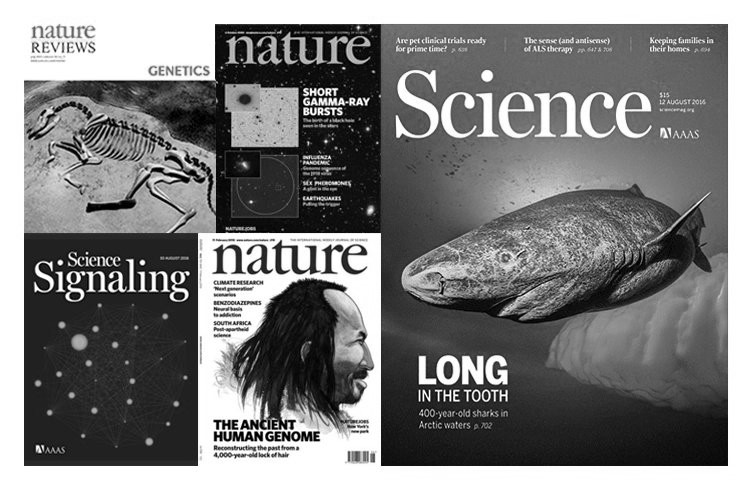Imagine that you want to read a paper. You probably either search the subject area of interest on PubMed or Google Scholar. Perhaps you were directed to the paper from an interesting Twitter thread or other social media site. Or maybe you were assigned the paper for a journal club or weekly educational activity.
If you're trying to read the paper from within your institution's network, the process is usually seamless. However, if you're trying to read from your house or on your phone, you will typically have to use a virtual private network (VPN) or undergo some institutional log-in procedure.
Finally, you're ready to read the paper. And almost always we instinctively hit the 'Download PDF' button. I continue to do this even though I haven't owned a printer in years. Maybe the PDF makes it easier to share the paper with colleagues, drop it into a reference manager, or maintain access to it without repeatedly accessing the paywall.
In some sense, PDFs are a paper relic in an otherwise digital age. The text does not easily scale on different screen sizes. The fonts and colors are chosen by the publisher, not the user. There is no way to read the article in dark mode or utilize any other accessibility features.
Moreover, tables and figures are often presented as static images, rarely taking advantage of dynamic features available on modern web interfaces. In addition, critical data is either buried in a supplementary section or omitted altogether. Common examples of this include code used to run statistical analysis or the survey instrument used in survey studies. While maintaining supplemental information separately made sense at a time when publishers were constrained by page numbers and the marginal cost of printing another page, this is no longer true in digital formats.
In my experience, the user experience falls short of the joy of reading excellent journalism, following an academic conversation on Twitter, or listening to a podcast about a current hot topic. And making papers easier to read is only half the battle.
There are also a lot of pain points in writing papers. After you finish writing the manuscript, you have to submit it to a journal. Submission portals are usually made with outdated technology and submitting is a tedious experience. Once the process is complete, it can take several weeks before a decision is reached.
The peer review process is typically opaque. For most papers, readers do not know who the reviewers were, what comments they had, or what changes resulted from those comments. Furthermore, there is more uncertainty today about whether the institution of peer review is achieving its stated mission of ensuring that only high quality research gets published. Adam Mastroianni writes about this in his Substack blog Experimental History.

Once an article is published, there is no easy way to change the article (unless it has to be redacted). Rather than being a dynamic node in a scientific conversation around a topic that can be modified or refined as more data becomes available, it is a static post.
Finally, the financial structures around academic publishing are very different from any other mode of content creation. Neither the scientists who create the work nor the reviewers who screen it get paid for their efforts. Some say that introducing financial motives into academic publication would reduce the quality and integrity of the science. This point of view would be valid if research was truly a not-for-profit enterprise, but this is far from reality.
Papers cost money to read. Most often, publishing companies charge high fees to institutions for the rights to their content. While they provide a standard format and online and paper versions of these articles (with limitations as discussed above), they do not pay for the science they are publishing. Much of the research they publish is funded by governments (and by extension taxpayers) and the peer review they rely on to maintain research quality is also done on a volunteer basis. While an argument can be made that the value added by the publisher is in standardizing formatting, this can be achieved at zero cost with modern digital publishing tools.
The journals on the other hand are far from altruistic. The total market for academic publishing was 29 billion dollars in 2019. Moreover, the top publishing companies had higher profit margins than Apple, Google, and Facebook. In a report titled Against Parasite Publishers, the Basic Research Community for Physics reviews the current state of publishing and providers recommendations for promoting open access content.

They perform a detailed financial analysis of revenues and profit margins of leading publishers. Some of the data has been reproduced in the graphs below.
More and more journals are offering an 'Open Access' publication model. In this model, articles are free to read. However, the lost subscription costs are simply transferred to the author in the form of article processing charges (APC) which can be prohibitively expensive for new investigators without established funding. I searched for the top surgery related journals on Google Scholar and obtained APC data for the top 20 surgery journals by h-index. Data is shown in the following table.
In addition, some scientists, especially in fields such as physics, directly publish their content on free pre-print servers such as arXiv even before they are reviewed. Pre-print services such as arXiv and biorXiv and medrXiv (the versions for biology and medical research, respectively) have also advanced open science. However, they still utilize PDFs as the basic format in which academic papers are consumed.
Sebastian Mayoni writes the following summarizing this scheme in a piece written for the University Post.
First, the university pays (often mostly supported by government) its academic staff to conduct research and write articles. Then the researchers send the article to a journal, which in some cases even demands fees to publish the article – so-called Article Processing Charges (APC). In some prestigious cases, the price for being published in, say, Nature costs USD 10,000 an article. If you want to be published in The Lancet Global Health, it may cost up to USD 5,000. Then the researcher often loses copyright to their articles, which the publisher subsequently can make money off in their subscription scheme.

Why do we do this? Why do we willingly give up copyrights to our self-generated content so that a third party can profit? It is because we have invented a prestige economy on which we base our academic capital. Number of publications as well as the impact factor of the associated journals is a key component of evaluation for medical school, residency, faculty positions, and academic promotion. I do not mean to say this system has no value. It has created an incredible amount of scientific and medical advancements that have saved lives. Rather, since we made this up ourselves, we also have the power to change it for the better.
Today, I am launching a new platform called Innovation and Design Experiments in Academic Surgery – or I.D.E.A.S. for short.
The designer Maggie Appleton writes about the concept of a Digital Garden. I think this is a compelling model for academic publishing. Instead of projects ending once you hit the submit button, academic media can take the form of living repositories of knowledge that grow over time. When applied to an entire field such as academic surgery, the digital garden can represent a collective spirit of building knowledge in public. I.D.E.A.S. can be thought of as part blog, part garden, part prototype of what a journal of the future could look like. I'm not exactly sure where this project is going to go - if anywhere. But it seems to be an exciting space that is ripe for innovation. And I have some free time.

As a current Surgical Innovation fellow, I will use this forum to maintain drafts of papers I am working on or that have been submitted awaiting peer review. I will provide my own ideas and commentary on technology, innovation, and design in surgery. I will also use it as a forum to discuss small scale projects and experiments (including failed experiments) that may not be easy to publish in traditional journals.
I welcome anyone who wants to contribute as well. The Ghost platform on which this blog is written allows for multiple authors to contribute to a publication. Initially, the only content moderation will be to make sure none of the content is offensive.
My vision is to create a robust, modern interface for sharing ideas, experiments, and data that is relevant to academic surgery - a platform to make good quality science accessible and fun.
There's a lot that hasn't been figured out. Here is our roadmap –
First, we need to build a system for reference management. The current standard of parenthetical citation or footnotes linking to a reference list at the end of the page is also a relic of print publishing. Modern web interfaces allow for hyperlinking and dynamic previews (as seen earlier in this article). At the same time, too many previews would increase clutter and reduce the readability of the paper. We will need to creatively design a reference system for modern web-first journals.
Second, we will need to figure out how to handle peer review. Since each article allows comments, we could utilize the commenting feature as a prototype and build from there. In addition, it would be ideal to have some sort of version history so that readers can understand how peer review influenced changes in the manuscript. Furthermore, readers can see how new data or knowledge from the author changed the paper as well.
Third, we will need to find a way to assign a Digital Object Identifier (DOI) to each article published. The DOI is a unique and permanent alphanumeric code that is attached to a manuscript (unlike website URLs which can change over time). DOIs are assigned by third party providers such as CrossRef for a fee. In my preliminary research, this seems to be the largest barrier preventing anyone from turning their personal blog into a journal. This article was manually assigned a DOI using the Zenodo service. To make a DOI entry, I uploaded a PDF containing a link to this article. Certainly, an an automated solution will be required to make this scalable. Individual articles can be published under a Creative Commons 4.0 licence which allows sharing and adapting original content with attribution.
Finally, we will have to figure out a way to create a sustainable future for this and similar publications. The Ghost platform charges 11 dollars per month. We currently do not have any plans for soliciting advertisements and will start out as a free publication. The vision of making this a true Diamond Open Access forum (no readership fee, no article processing charge) is attractive. Should we ever charge a subscription fee, it will be something accessible to every student and resident. Furthermore, if we go in the paid subscription route, then we can brainstorm a system in which the content creators share in the profits.
All in all, technology can improve the way that science is consumed, created, and financed. I would appreciate any ideas, feedback, or contributions. As Thomas Edison once said, "There are no rules here – we’re trying to accomplish something."
https://doi.org/10.5281/zenodo.7500519



